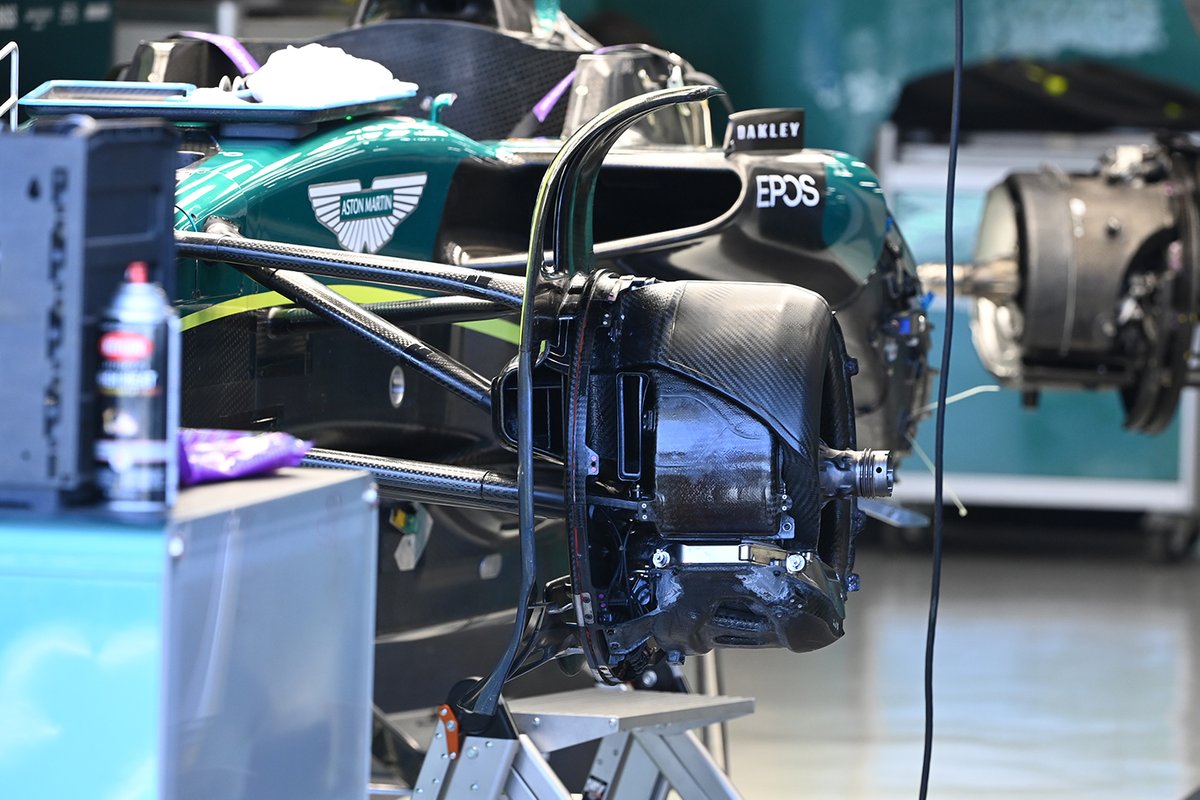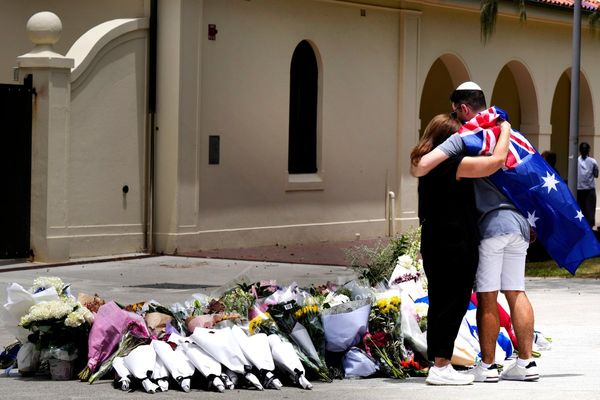
In the past, we might have seen F1 teams arrive in Saudi Arabia with a bespoke rear wing solution to reduce downforce and drag.
However, the cost cap and resource restrictions have resulted in everyone having to look for ways to improve performance without manufacturing new parts for every race.
Mercedes, which used this specification of wing in Bahrain, has made some alterations to better suit the demands of the Jeddah street track, with the upper rear corner of the endplate relieved of its cutout.
As we saw during the back end of last season, this is made possible due to the design of the endplate, which allows for the use of an interchangeable panel.
You'll also note how the tip section of the endplate has been trimmed down, rather than having a flat edge, in order to alter the wing's behaviour.

Aston Martin has also made a modification to its rear wing, with the central section of the upper flap's trailing edge trimmed in order to reduce downforce and drag.

Alpine will add some additional cooling on the A523 in Saudi Arabia, with a large set of cooling gills pressed into the sidepod's bodywork.

Here we're able to take a look at the front brake assembly on the Red Bull RB19 prior to the various ducts and channels being put in place.
Note the caliper's design which, as you'd expect, is as lightweight as possible but also has some interesting cooling rods protruding from its surface.

Alpine has continued to house its front brake caliper in the three o'clock position this season, utilising a carbon fairing to deliver cool air from the main inlet, whilst also having teardrop-shaped ports to allow heat generated by the disc a means to pass through.

Ferrari's front brake assembly by comparison, with the caliper mounted in the five o'clock position has a more substantial fairing around it, which has also been coated to help reduce heat transfer.

Here we can see the Red Bull RB19's rear end which is yet to be attached to the chassis. We're afforded a good view of some of the inboard suspension elements, the rear wing support pillar's cage, mounted to the crash structure and the passage that the exhaust takes beneath the suspension elements and is lined with a gold reflective coating.

McLaren's front brake assembly which you'll note has some similarities in the pipework arrangement to Ferrari, as the cool air is fed in via the inlet and the heat is rejected via the rearward facing outlet.

Alfa Romeo's DRS pod has been slightly altered when compared with the Bahrain spec version, as a smaller conduit for the mechanism sits on the top rear portion of the main pod.
Meanwhile, the flap pivots are the more conventional barrel type, rather than the teardrop-shaped ones we've seen them use on other specifications of their rear wing.

A look inside the AMR23's nose as the Aston Martin mechanics carry it into the garage.

The AMR23's front brake assembly is an area where the team has made heavy revisions compared with 2022, as not only has the caliper been moved into a lower position, but there's also a brake disc fairing now in use too.

The rear brakes on the Alfa Romeo C43 also have a brake disc fairing to help reduce the transfer of heat between the various components housed within the brake drum.

A look at the radiator and cooler layout on the AlphaTauri AT04, with the team still employing a large saddle cooler, as has been the case for many years now, which allows it to package the sidepods more to its liking.

Williams appears to be readying the FW45 with its lower downforce package for the Saudi Arabian Grand Prix.

Haas is also opting for a rear wing option to help boost straightline speed. You'll note the upper flap has no Gurney on the trailing edge either, but this might change given the wing was still being constructed at the point this photo was taken, given the DRS pod is missing.







